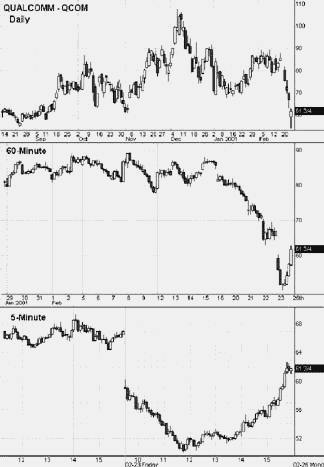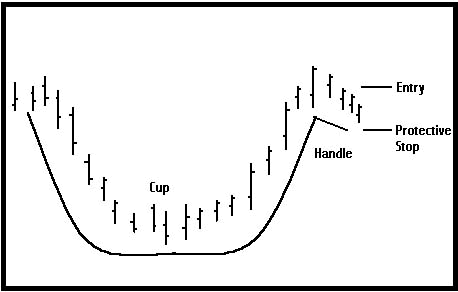CRB Trader Archive
Post on: 15 Июнь, 2015 No Comment

— 2001: Volume 10, No. 2
Using Open Interest As a Trading Tool
By George Kleinman
Open interest is the number of contracts outstanding. The total number held by buyers or (not and) sold short by sellers on any given day. The open interest number gives you the total number of longs, and the total number of shorts, since in commodity futures, the short interest is always equal to the long interest. Each long is either willing to accept delivery of a particular commodity, or to offset his contract(s) at some time prior to the expiration date. Each short is either willing to make delivery or to offset his contract(s) prior to the expiration date. With this in mind, you can plainly see that open interest is a measurement of the willingness of longs and shorts to maintain their opposing positions in the marketplace. It is a quantitative measurement of this difference of opinion.
How It Works
Open interest numbers go up or down based on how many new traders are entering the market and how many old traders are leaving. Open interest goes up by one, when one new buyer and one new seller enter the market. This act creates one new contract. Open interest goes down by one, when a trader who is long closes out one contract with someone who is already short. Since this contract is now closed out, it disappears from the open interest statistics. If a new buyer buys from an old buyer (who is selling out) total open interest remains unchanged. If a new seller buys back or covers from a new seller entering the market, open interest also does not change. The old bear had to buy to cover, with the other side of this transaction being a sell by the new bear.
Let’s look at a typical example. If one day heating oil has a total open interest of 50,000 contracts, and the next day it rises to 50,100 this means 100 new contracts were created by 100 new buyers and 100 new sellers. Or perhaps 10 new net buyers and sellers of 10 contracts each, or whatever it takes net to create the new 100. Of course, during that day many people closed out, many entered, but the net result was the creation of new open interest. 50,100 shorts and 50,100 longs at the end of the day. Theoretically, one short who had 100 contracts sold could have taken the opposing side of 100 others who each bought one, but the short and long interest are always the same on any particular day.
Open interest figures are released daily by the Exchanges, but they are always for the previous day, so they are a day old. You can chart open interest on a price chart, and the direction it is changing can tell you some interesting things.
Open Interest As a Tool
Open interest statistics are a valuable tool which can be used to predict price trends as well as reversals. The size of the open interest reflects the intensity of the willingness of the participants to hold positions. Whenever prices move, someone wins and someone loses; the zero sum game. This is important to remember because when you think about the ramifications of changes in open interest you must think about it in the context of which way the market is moving at the time. An increase in open-interest shows a willingness on the part of the participants to enlarge their commitments. Let’s say the market is moving lower, and open interest is increasing. You can assume that some of the hurt longs have left the party, but they are being replaced by new longs and many existing longs are still there. If they were all liquidating at the same time, open interest would drop. Or, if the short holders were on balance taking profits and leaving the party, open interest would also drop. However, since the open interest is increasing, and the price is dropping, you can assume the bulls are losing money, but many must be hanging in there and/or they are recruiting buddies at an increasing rate. What are the ramifications of an open interest decline? It is a sign that the losers are in a liquidation phase (it doesn’t matter which way the market is moving), the winners are cashing in, and new players are not entering in sufficient numbers to replace them.
Six Winning Option Trading Rules
Rule 1 If prices are in an uptrend, and open interest is rising, this is a bullish sign. The bulls are in charge. They are adding to positions and making the money, thus becoming more powerful. There are undoubtedly shorts who are being stopped out, but new sellers are taking their place. As the market continues to rise, the longs get stronger and the shorts get weaker.
Rule 2 If prices are in a downtrend, and open interest is rising, this is a bearish sign. The bears are in charge in this case. They are adding to their positions, and they are the ones making the money. Weaker longs are being stopped out, but new buyers are taking their place. As the market continues to fall, the shorts get stronger and the longs get weaker. Another way to look at Rules 1 and 2; as long as the open interest is increasing in a major trend, it will have the necessary financing to draw upon and prosper.
Rule 3 If prices are in an uptrend and open interest is falling, this is a bearish sign. The old longs, the “smart money” (after all they have been right to this point) are taking profits, they’re liquidating. They are replaced to some extent by new buyers, who will not be as strong on balance, but the declining open interest is an indication the weak shorts are also bailing. They will be replaced to an extent by new shorts who are stronger than the old shorts were.
Rule 4 If prices are in a downtrend and open interest is falling, this is a bullish sign, The mirror image of Rule 3. The smart money, the shorts, are covering or liquidating. They will be replaced to a degree by new shorts not as strong as they were, but the declining open interest indicates the weakened longs are throwing in the towel to a major degree. They will be replaced by fresh longs who were not as weakened by the lower prices as the old longs were. Another way to look at Rules 3 and 4; when the pool of losers is depleted, the party will be over.

Rule 5 If prices are in a congestion range, and open interest is rising, this is a bearish sign. The reason is the public generally plays the long side. Rising open interest in a trading range affair assumes the commercials and professionals are taking the short side, and the uniformed public will most likely lose out in the end.
Rule 6 If prices are in a congestion range and open interest is falling, this is a bullish sign. The reason is the professionals who are more likely to be short, are covering. The weak hands are throwing in the towel.
A Few Examples
Look at the cattle chart. This is a nicely trending market, trending up, and open interest has been building the whole time. As long as open interest continues to climb in a bull market, the bulls are in charge. The soybean chart was the drought market of 1988. Note how open interest and volume rose dramatically on the bull move from April until end of June. Volume remained high, but open interest started to collapse as did the market. Once the last weak short was out, and the smart money was long gone, the new folk took it down in a hurry!
Figure 1:
Figure 2:
Open Interest and Liquidity














